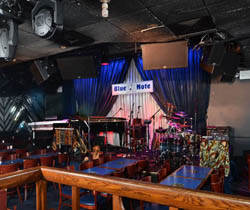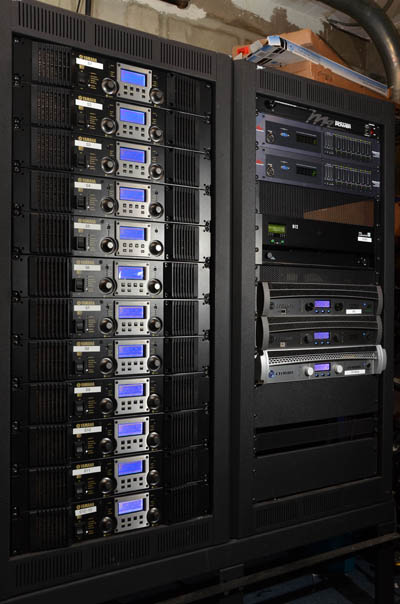
Role Of Control
As a practical illustration of how this works, take, for example, the three smaller 8190Tv cabinets suspended above the stage. Why are they there?
“Just imagine sitting right there in front of the stage,” Peleg imparts. “The kick drum is five feet from your right ear, and the bass and guitar cabinets are six feet from your left ear. The vocalist is standing right in front of you, and if it weren’t for those cabinets, you’d be able to see his or her mouth move clearly, but unable to hear anything coming out.
“These loudspeakers compensate for those who can only hear stage sounds, not those in the house – this is where their vocals or anything else that may be missing come from.”
Transpose that same logic to the rest of the loudspeakers, each adjusted for what the audience can and cannot hear in each area.
Delay between each cabinet prevents interference as needed, and control plays a huge role in putting everything into its perfect place.
“Each loudspeaker is powered and controlled separately,” Peleg continues, “to prevent inter-cabinet interference.”
A total of 13 Yamaha TX4N DSP-based amplifiers power the full-range portion of the house, each programmed by SLS with a unique preset expressly for its dedicated tasks.
Modifications were made to these presets when the system was tuned, but the SLS settings proved a very good starting point in each case.
“Now we can control the levels of each speaker individually, plus compensate for bass traps, limiting, levels of acoustical absorption, or any one of a number of things that can be addressed within the DSP,” Peleg notes. Overall system processing is handled with two dbx DriveRack 4820s located in the racks with the amplifiers.

Networked for both signal and control, the entire system is digital from stem to stern. The only points of conversion are A/D at the stage box input and return, and D/A at the output of the amplifiers. In between, it’s a digital domain entirely using either EtherSound or AES/EBU.
Lowering The Boom
Prior to this latest upgrade, the Blue Note never had subwoofers. Increasingly over the years, however, acts seen and heard in the room coming from outside the jazz world required an extended range of LF.
For a time, the club rented subs as needed, setting them up on the floor. In purely functional terms this worked, but killing off space for two tables of four patrons to accommodate the addition of subs can impact profitability in some circumstances. Given ceiling height and performance factors, flying the subs wasn’t an option either.
